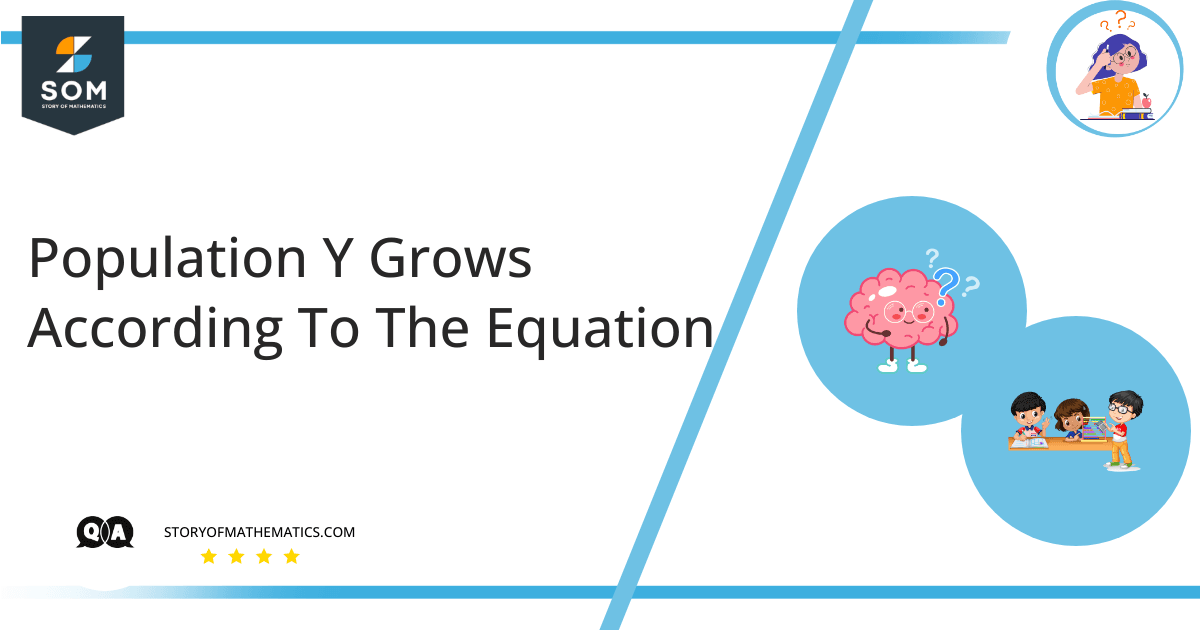
This problem aims to familiarize us with the law of natural growth and decay. The concept behind this problem is exponential growth formulas and their derivates. We have seen that numerous entities grow or decay according to their size.
For instance, a group of viruses may triple every hour. After some time $(t)$, if the extent of the group is given by $y (t)$, then we can illustrate this knowledge in mathematical terms in the form of an equation:
\[ \dfrac{dy}{dt} = 2y \]
So if an entity $y$ grows or wears proportional to its size with some constant $k$, then it can be expressed as:
\[ \dfrac{dy}{dt} = ky \]
If $k > 0$, the expression is known as the law of natural growth,
If $k < 0$, then the expression is known as the law of natural decay.
Expert Answer
As we have seen the formula for growth and decay:
\[ \dfrac{dy}{dt} =ky \]
You might have also seen the exponential function of the form:
\[ f(t) = Ce^{kt} \]
This function satisfies the equation $\dfrac{dy}{dt} = ky$, such that:
\[ \dfrac{dC\cdot e^{kt}}{dt} = C\cdot k\cdot e^{kt} \]
So it seems that it is one of the possible solutions to the above differential equation.
So we’ll be using this equation to get the value of $k$:
\[ P[t] = Ce^{kt} \]
Consider that the initial population is set as $P[t] = 1$, when the time $t = 0$, so the equation becomes:
\[ 1 = Ce^{k|0|} \]
\[1 = Ce^{0} \]
\[1 = C\cdot 1 \]
Hence, we get $C = 1$.
So if the population double after every decade then, we can rewrite the equation as:
\[2 = 1\cdot e^{10k} \]
Taking natural log to remove the exponential:
\[\ln 2 = \ln [e^{10k}] \]
\[\ln 2 = 10k \]
So $k$ comes out to be:
\[k = \dfrac{\ln 2}{10} \]
OR,
\[k = 0.0693 \]
As you can see that $k > 0$, indicates that the population is growing exponentially.
Numerical Result
$k$ comes out to be $0.0693$, which states that $k > 0$, indicating the population growing exponentially.
Example
A pack of wolves has $1000$ wolves in it, and they are increasing in number exponentially. After $4$ year the pack has $2000$ wolves. Derive the formula for the number of wolves at random time $t$.
The phrase growing exponentially gives us an indication of the situation that is:
\[f(t)=Ce^{kt} \]
Where $f(t)$ is the number of wolves at time $t$.
Given in the statement, initially means at $t = 0$ there were $1000$ wolves and at time$ t=4$ there are doubles $2000$.
The formula to find $k$ given two different time lapses is:
\[k= \dfrac{\ln f(t_1)-\ln f(t_2)}{t_1 -t_2} \]
Plugging in the values gives us:
\[k= \dfrac{\ln 1000-\ln 2000}{0 -4} \]
\[k= \ln \dfrac{1000}{2000}-4 \]
\[k= \dfrac{\ln{\dfrac{1}{2}}}{-4} \]
\[k= \dfrac{\ln 2}{4} \]
Therefore:
\[f(t) = 1000\cdot e^{\dfrac{\ln 2}{4}t}\]
\[f(t) = 1000\cdot 2^{\dfrac{t}{4}}\]
Hence, the preferred formula for the number of wolves at any time $t$.
